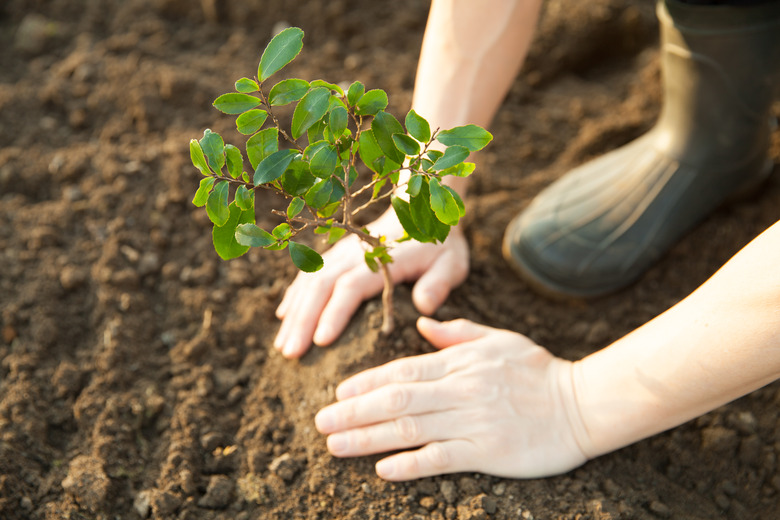How Can We Actively Restore The Environment?
Human activity has many detrimental effects on the environment. The use of chemicals can damage fragile ecosystems, the garbage produced by humans pollutes land and water and energy production results in harmful emissions that contribute to climate change. Reversing these effects and restoring the environment is a complicated process comprised of various efforts that differ depending on location and circumstances. Active restoration of the environment includes small community efforts, such as planting trees in the backyard, and large-scale efforts, such as restoring the Louisiana bayou ecosystem after Hurricane Katrina.
Watershed Restoration
Watershed Restoration
The United States government and the state of Florida have invested more than $10 billion in a 35-year plan to restore the Everglades, a 1.5-million acre wetlands preserve that is home to many vulnerable plant and animal species. Steps taken to restore the Everglades include managing the delivery of fresh water to the area in order to reverse the degradation caused by human activities and removing exotic invasive species.
When the Deepwater Horizon offshore drilling rig sank to the ocean floor in 2010, a massive oil spill damaged the environment in the Gulf of Mexico. Water was contaminated, wildlife was killed and restoring that environment involved much more than just cleaning up the oil. It took a lot of manpower to restore the area's river banks and replant wetlands.
It does not take a disaster to damage a riparian environment. On a smaller scale, efforts to restore this type of environment include planting vegetation on stream banks to prevent erosion, filtering pollutants before they reach the water and providing cover for fish and other wildlife.
Several groups work to restore watershed habitat, so local volunteer opportunities are easy to find. For example, in the Pacific Northwest, Adopt a Stream Foundation works to restore trout and salmon habitat by adding character – in the form of fallen trees and riparian vegetation – to spawning streams damaged by logging practices.
Forest Restoration
Forest Restoration
Logging is one of the most significant threats to forest ecosystems. Aggressive replanting efforts help slowly restore trees to the forest, but other actions are necessary to return the forest to its natural state. These efforts include leaving dead trees to rot and enrich the soil system and encouraging the growth of several plant species. Recreationists can help restore forests by staying on established trails and packing out garbage.
Forests are also threatened by the development of commercial and agricultural space. In developing tropical countries, forests are cut down to make room for farms, but groups like the Union of Concerned Scientists are working to intensify crop production on existing farmland to reduce the need for forest restoration efforts.
Grassland Restoration
Grassland Restoration
Grasslands are rapidly disappearing throughout the United States, but several groups are working to restore this ecosystem. In New York, the United States Fish and Wildlife Service is restoring grassland habitat in an effort to restore populations of the birds that nest in this ecosystem. They mow down woody vegetation, so that it no longer competes for space and resources with native grass species. Then, the area is reseeded with a variety of native grasses.
Reduce the Need for Restoration
Reduce the Need for Restoration
One of the best ways to contribute to the restoration of natural environments is to help reduce the need for restoration in the first place. Recycling materials such as paper and plastic will reduce the harvest of the raw materials used to create these products, such as trees and petroleum. It is possible to save more petroleum and reduce emissions that are harmful to the environment by walking, riding a bike or carpooling whenever possible.
Conserving energy by turning off lights and turning down the heat will also help reduce harmful emissions, such as the sulfur emitted when coal and oil are burned. Sulfur emissions contribute to the formation of acid rain, which further degrades the environment, according to the United States Environmental Protection Agency.
Cite This Article
MLA
Cairoli, Sarah. "How Can We Actively Restore The Environment?" sciencing.com, https://www.sciencing.com/can-actively-restore-environment-15545/. 30 September 2021.
APA
Cairoli, Sarah. (2021, September 30). How Can We Actively Restore The Environment?. sciencing.com. Retrieved from https://www.sciencing.com/can-actively-restore-environment-15545/
Chicago
Cairoli, Sarah. How Can We Actively Restore The Environment? last modified August 30, 2022. https://www.sciencing.com/can-actively-restore-environment-15545/
